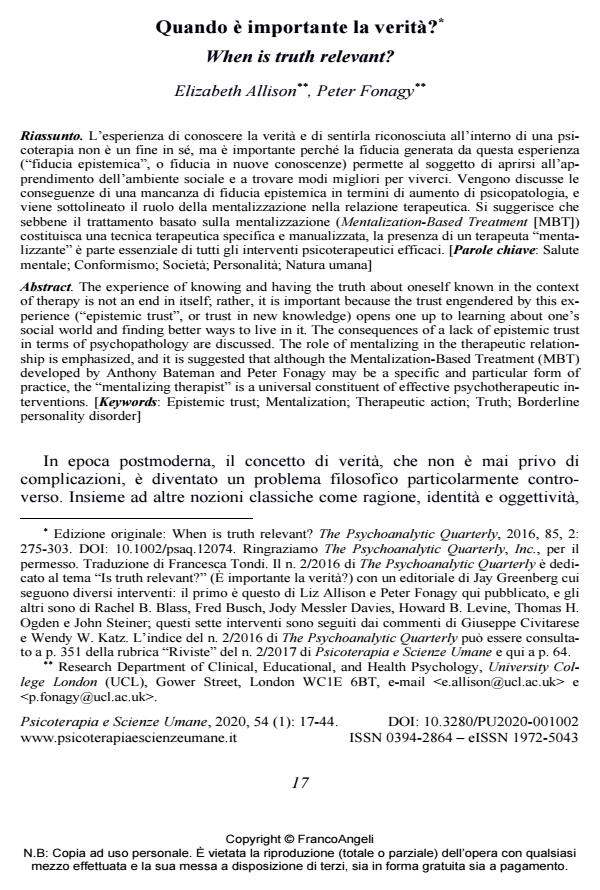Quando è importante la verità?
Titolo Rivista PSICOTERAPIA E SCIENZE UMANE
Autori/Curatori Elizabeth Allison, Peter Fonagy
Anno di pubblicazione 2020 Fascicolo 2020/1
Lingua Italiano Numero pagine 28 P. 17-44 Dimensione file 152 KB
DOI 10.3280/PU2020-001002
Il DOI è il codice a barre della proprietà intellettuale: per saperne di più
clicca qui
Qui sotto puoi vedere in anteprima la prima pagina di questo articolo.
Se questo articolo ti interessa, lo puoi acquistare (e scaricare in formato pdf) seguendo le facili indicazioni per acquistare il download credit. Acquista Download Credits per scaricare questo Articolo in formato PDF

FrancoAngeli è membro della Publishers International Linking Association, Inc (PILA)associazione indipendente e non profit per facilitare (attraverso i servizi tecnologici implementati da CrossRef.org) l’accesso degli studiosi ai contenuti digitali nelle pubblicazioni professionali e scientifiche
L’esperienza di conoscere la verità e di sentirla riconosciuta all’interno di una psicoterapia non è un fine in sé, ma è importante perché la fiducia generata da questa esperienza ("fiducia epistemica", o fiducia in nuove conoscenze) permette al soggetto di aprirsi all’apprendimento dell’ambiente sociale e a trovare modi migliori per viverci. Vengono discusse le conseguenze di una mancanza di fiducia epistemica in termini di aumento di psicopatologia, e viene sottolineato il ruolo della mentalizzazione nella relazione terapeutica. Si suggerisce che sebbene il trattamento basato sulla mentalizzazione (Mentalization-Based Treatment [MBT]) costituisca una tecnica terapeutica specifica e manualizzata, la presenza di un terapeuta "mentalizzante" è parte essenziale di tutti gli interventi psicoterapeutici efficaci.
Parole chiave:Salute mentale; Conformismo; Società; Personalità; Natura umana
Elizabeth Allison, Peter Fonagy, Quando è importante la verità? in "PSICOTERAPIA E SCIENZE UMANE" 1/2020, pp 17-44, DOI: 10.3280/PU2020-001002